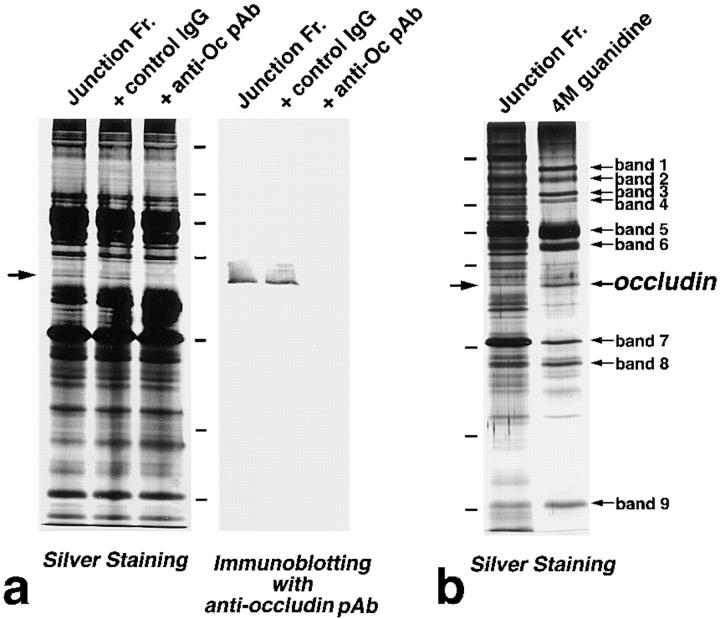Figure 1.
Identification of the occludin band and nine guanidine-insoluble bands in the isolated junction fraction from chick liver. (a) Immunoabsorption of occludin from the isolated junction fraction. The isolated junction fraction was solubilized with 0.1% SDS. After dilution, immunoprecipitation was carried out with rabbit anti–chicken occludin pAb (F44) or control rabbit serum, and then the supernatant was processed for SDS-PAGE. In silver-stained gels, a 60-kD band (arrow) that was detected in the non-treated (Junction Fr.) as well as control serum-treated (+control IgG) fraction, disappeared in the F44-treated fraction (+anti-Oc pAb). Thus, occludin was identified as a 60-kD band in the junction fraction by silver staining. Accompanying immunoblots with anti-occludin pAb (F44) confirmed this notion. (b) Guanidine extraction of isolated junction fraction. To thoroughly extract peripheral membrane proteins from isolated junctions, the fraction was treated with 4 M guanidine-HCl. The silver-stained banding pattern was compared between non-treated (Junction Fr.) and guanidine-treated (4 M guanidine) samples. Occludin in the non-treated fraction (arrow) was concentrated by guanidine treatment (occludin). In addition to the occludin band, nine guanidine-insoluble bands were identified (bands 1–9), the amounts of which were similar to or greater than that of occludin. Bars indicate molecular masses of 200, 116, 97, 66, 45, 31, and 21 kD, respectively, from the top.

